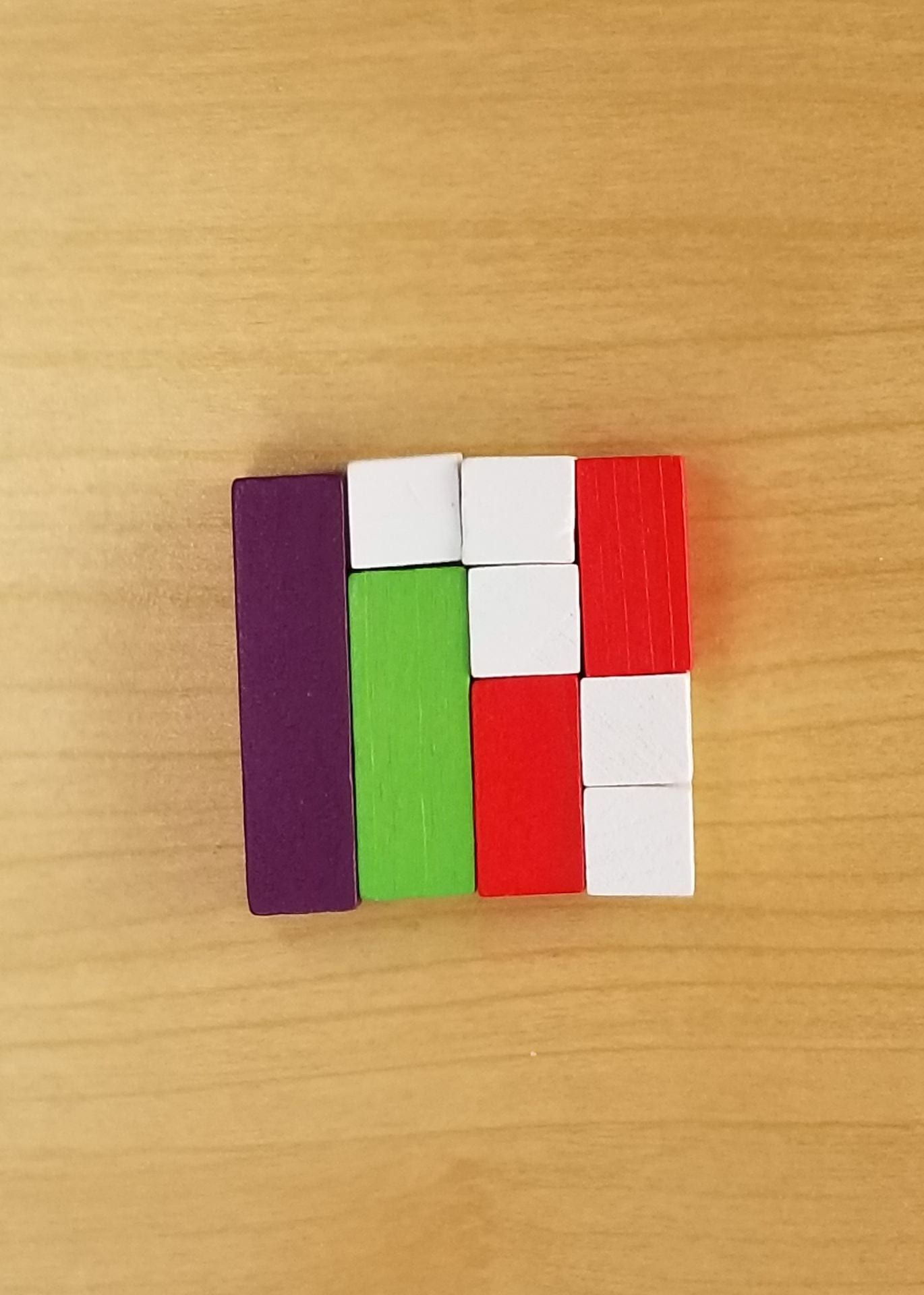Image of the Week: The Number Relationships in Cuisenaire Rods
January 30, 2022The Number Relationships in Cuisenaire Rods
Take a close look at the Cuisenaire rods in the image of the week. What do you notice?
Some things you might see are:
- The rods together make a rectangle.
- The rectangle is made of four columns of rods.
- The purple rod on the left is the longest and it goes from the top to the bottom of the rectangle.
These initial observations can be used to start to fuel whole number comparisons and equivalencies, such as:
- Purple = White + Green = Red + 2 White
- Red = 2 White
- Green = Red + White
- If we understand the White block as a unit, then we can see the Red = 2, Green = 3, and Purple = 4
- The rectangle then is 4 x 4 units and has an area of 16 square units.
Students might also think about part and whole relationships, with observations like:
- White = ½ Red
- Red = 2/3 Green
- White = 1/3 Green
- Red = ½ Purple
- Green = 1 ½ Red
These are just the beginning of the observations students might make about the relationships between the rods shown in this image, whether whole number or fractional. Notice that one of the keys is that fractions only exist in relationship to a whole. For instance, the White cube is ½ in relationship to the Red as a whole, but it is 1/3 in relationship to the Green as a whole. Press students to be precise about both the part and the whole and explore how a single rod can be thought of as many different numbers is the whole changes.
Packed inside this one image are dozens of relationships that students can notice, explain, prove, and draw. Consider providing students with the pdf version of this activity so they can annotate the relationships they see. These artifacts can then be shared and compared in a class discussion or a digital or physical gallery walk.
You can use this – or any of our Cuisenaire rod images – to open up conversations about representing relationships abstractly (where “The Red and White are the same as the Green” can become Red + White = Green, or even R + W = G), composing and decomposing numbers, or part and whole relationships.
As an extension, consider inviting them to create their own Cuisenaire rod rectangle to explore the different relationships they contain. Students can take photos and swap with other groups to find and describe new relationships.
And we invite you to follow us on Twitter! Tweet us the fascinating ideas you students have about our activities or how you’re trying these activities in your space. We can’t wait to hear from you!
To multiplicity, cheers!
Jen Munson and the multiplicity lab group
Read the Archive
Get the Image of the Week
Each week we bring you a new image and activity you can do with your students tomorrow, and we spotlight a feature of the mathematical work that we think is important for students’ learning and your teaching.
Stay connected and see what's new.

